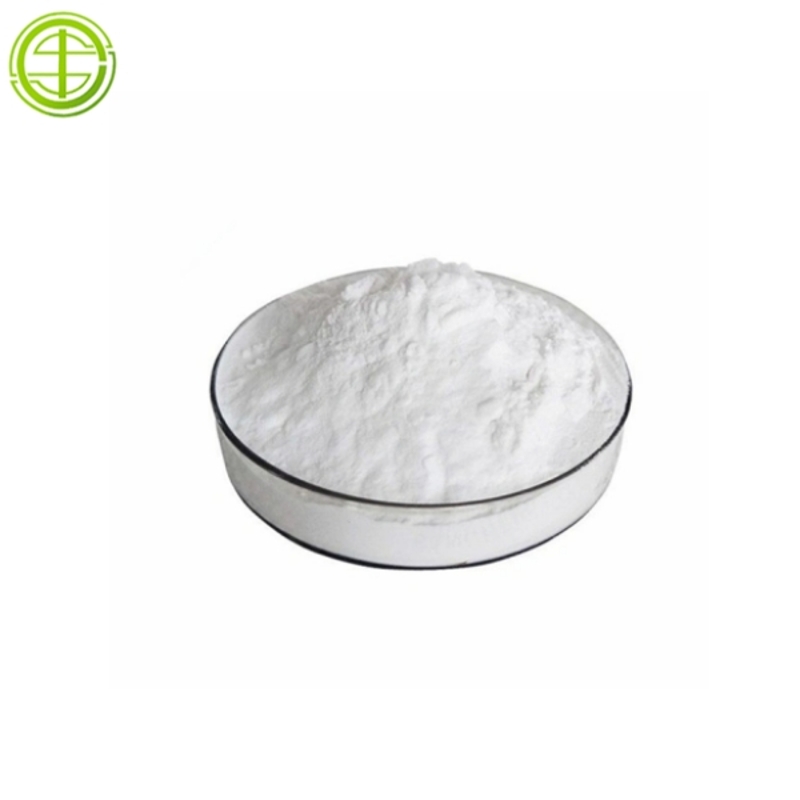-
Categories
-
Pharmaceutical Intermediates
-
Active Pharmaceutical Ingredients
-
Food Additives
- Industrial Coatings
- Agrochemicals
- Dyes and Pigments
- Surfactant
- Flavors and Fragrances
- Chemical Reagents
- Catalyst and Auxiliary
- Natural Products
- Inorganic Chemistry
-
Organic Chemistry
-
Biochemical Engineering
- Analytical Chemistry
- Cosmetic Ingredient
-
Pharmaceutical Intermediates
Promotion
ECHEMI Mall
Wholesale
Weekly Price
Exhibition
News
-
Trade Service
Chen Ying (Zhouzhi County Food and Drug Inspection and Testing Center, Xi'an 710400, Shaanxi)
Abstract: Simultaneous determination of Sudan Ⅰ~Ⅳ in chili noodles, hot pot ingredients, spicy noodles, duck eggs and duck blood by UPLC-MS/MS (UPLC-MS/MS).
The sensitivity and applicability of the detection method are optimized by optimizing extraction reagents, elimination of sample matrix effects, chromatographic and mass spectrometry conditions and other parameters
.
In the positive ion mode of the electrospray ion source, multiple reaction monitoring (MRM) mode detection, external standard method for quantification
.
The linear relationship between Sudan Red Ⅰ~Ⅳ is good, the correlation coefficient (2) is greater than 0.
999, Sudan Red Ⅰ~Ⅳ at 3 levels of addition, the recovery rate ranged from 85.
1% to 104.
9%, the standard deviation () is less than 6.
2%.
The limit of output and quantification is 1.
0~6.
0µg/kg
.
This method has simple processing process, short analysis time and high accuracy.
It is suitable for the detection of Sudan Red Ⅰ~Ⅳ in chilli noodles, hot pot ingredients, spicy strips, duck eggs and duck blood.
It can be used for the illegal addition of Sudan Ⅰ~Ⅳ to food.
Screening
.
Keywords: ultra-high performance liquid phase-tandem mass spectrometry; Sudan red; illegally added
Sudan red.
There are 4 components, Sudan red Ⅰ~Ⅳ.
It is a red granular or powdered red dye commonly used in industrial coloring such as shoes.
Because of its carcinogenic effects and endangering human health, China and the European Union have banned its use in food production[1]
.
Some criminals on the market still add industrial dyes illegally for the sake of beautiful product color and good sale
.
At present, the detection methods of Sudan Red Ⅰ~Ⅳ mainly include thin layer chromatography [2], ultraviolet-visible spectrophotometry [3], near-infrared microscopic imaging spectroscopy [4], liquid chromatography [5-6], liquid chromatography [5-6], The combined use of gas chromatography-mass spectrometry [7-8] and chemiluminescence analysis [9], these methods are complicated in pre-processing, large amount of reagents, long detection period, low accuracy, and are not suitable for the various complexities encountered in actual work.
Screening determination of Sudan red in matrix
.
In this experiment, through the research and optimization of chromatographic conditions and mass spectrometry parameters, a method for simultaneous analysis of Sudan I~IV by high performance liquid chromatography-tandem mass spectrometry was established.
.
The pretreatment of this method is simple, and the content of Sudan I-IV can be measured at the same time in 7 minutes.
The method is fast and simple, and the results are accurate.
It can be used for the screening of illegally added Sudan I-IV in food
.
1 Materials and methods
1.
1 instrument and reagent
liquid chromatography - tandem mass spectrometry: Qtrap 5500 triple quadrupole tandem mass spectrometer (AB SCIEX U.
S.
company); with electrospray ionization (ESI); LC20A UPLC- Chromatograph (Shimadzu, Japan); MS1003S electronic balance (Mettler Toledo, Switzerland); Milli-Q ultrapure water instrument (Millipore, USA); MFV-24 intelligent nitrogen blowing instrument (Guangzhou Detai Instrument Technology Co.
, Ltd.
)
.
1.
2
Sudan Red Ⅰ~Ⅳ standard products for drug and reagent experiments, all with a purity greater than 95%, purchased from Dr.
Ehrenstorfer GmbH; methanol, acetonitrile (chromatographically pure, American Mrda company); formic acid (chromatographically pure, American Fisher Scientific company); The water is ultrapure water
.
Samples of chili noodles, hot pot ingredients, spicy strips, duck eggs, and duck blood are all commercially available
.
1.
3 Preparation of standard solutions.
Accurately measure appropriate amounts of standard solutions, add acetonitrile to make a solution containing about 1.
0 mg per 1 mL, seal the standard stock solution, and store it at 4 ℃
.
Measure appropriate amounts of the above-mentioned Sudan Red I to IV standard stock solutions, and dilute them with methanol to a mixed reference substance stock solution of about 0.
5 mg/mL
.
Precisely measure an appropriate amount of the mixed reference substance stock solution, and add the blank sample matrix extract to prepare a series of mixed matrix standard solutions
.
1.
4
Extraction of sample processing method
.
Take an appropriate amount of the sample to be tested, mix it, and grind it.
Weigh 5.
0 g of the powder (accurate to 0.
001 g), place it in a 50 mL pvc centrifuge tube, add 15 mL of acetonitrile ultrasonic extraction (power 300 W, frequency 50 kHz) for 30 min, Centrifuge at 6000 r/min for 5 min, take the supernatant organic solution, add 15 mL of acetonitrile to the residue and re-extract once, combine the two organic solutions in a chicken heart bottle, rotary evaporate to near dryness, and set aside
.
Purification
.
Dissolve the sample extracted above with 1 mL of acetonitrile, mix well, transfer to an alumina chromatography column, elute with n-hexane, concentrate by nitrogen blowing and leave to near dryness, reconstitute with 1 mL of acetonitrile, pass through a 0.
22 μm filter membrane, and set aside
.
1.
5 Chromatographic conditions and mass spectrometry conditions
Chromatographic column: Waters UPLC BEH column (3.
0 µm, 2.
1mm×100 mm); column temperature: 35 ℃; injection volume: 5 μL; mobile phase: phase A is 0.
1% formic acid aqueous solution, phase B For acetonitrile solution, gradient elution was performed, flow rate: 0.
6 mL/min
.
Ionization source mode: electrospray ionization; ionization source polarity: positive ion mode; atomizing gas: nitrogen; scanning method: positive ion scanning; detection method: multiple reaction monitoring (MRM); electrospray voltage: 4000 V; ion source temperature: 150 ℃, collision energy (CE) of 20 ~ 30 V, the voltage to the cluster (the DP) V 30 ~ 40
.
The exact mass and fragment ions of the specific analyte are: Sudan Red I 249.
1/156.
1, 249.
1/232.
2; Sudan Red II 277.
3/156.
1, 277.
3/160.
1; Sudan Red III 253.
2/156.
1, 253.
2/197.
0; Sudan Red IV 381.
1/224.
3, 381.
1/275.
8
.
2 Results and analysis
2.
1 Establishment of mass spectrometry method
The Sudan Red Ⅰ~Ⅳ standard stock solutions were respectively diluted to a concentration of about 200 µg/L, and tested according to the above chromatographic and mass spectrometry conditions.
Sudan Ⅰ~Ⅳ can be well separated within 7 minutes, and the method conditions meet the requirements of pepper.
Determination of Sudan Ⅰ~Ⅳ in noodles, hot pot ingredients, spicy strips, duck eggs and duck blood
.
2.
2 Standard curve and detection limit
Under the above-mentioned experimental chromatographic and mass spectrometry conditions, take 1.
3 mixed series of standard solutions 0~500 μg/L, draw a standard curve, and do linear regression with quantitative ion peak area vs.
mass concentration (μg/L) , Get the linear equations and correlation coefficients of Sudan I~IV
.
Sudan Red I:=1 271.
7+3 854.
8, Sudan Red II:=1 540.
1+4 678.
5, Sudan Red III:=1 383.
2+2 432.
3, Sudan Red IV:=1 262.
1+2 743.
3, 2 is greater than or equal to 0.
999
.
Dilute the solution at the lowest concentration point of the mixed series of solutions and analyze the sample to determine the signal-to-noise ratio.
The solution concentration with a signal-to-noise ratio of about 3 is used as the qualitative detection limit, and the solution concentration with a signal-to-noise ratio of about 10 is used as the quantitative detection limit
.
The detection limit and quantification limit are 1.
0~6.
0 µg/kg
.
2.
3 Precision and repeatability test
According to the conditions of this experiment, three addition levels (0.
1 µg/mL, 0.
2 µg/mL, 0.
5 µg/mL) were spiked and recovered experiments in 5 different matrix samples, with each addition level Parallel experiment 6 times
.
The average recovery rates of Sudan Red I are 89.
3%, 93.
5%, and 91.
9%; the average recovery rates of Sudan Red II are 92.
2%, 91.
4%, and 104.
9%; the average recovery rates of Sudan Red III are 87.
9%, 88.
0%, and 90.
5%.
; The average recovery rates of Sudan Red IV are 85.
1%, 86.
9%, 91.
5%, and the average relative standard deviations are 4.
05%, 3.
2%, and 6.
18%, respectively, indicating that the method has good precision and accuracy
.
It can meet the analysis
requirements of Sudan Red Ⅰ~Ⅳ in food
.
2.
4 Sample determination The
established method was used to screen 50 batches of chilli noodles, hot pot ingredients, spicy strips, duck eggs, and duck blood samples sold in the market
.
Sudan I to IV were not detected in the tested samples .
3 Conclusion
The UPLC-MS/MS high-resolution mass spectrometry detection method established in this study can simultaneously determine the illegal addition of Sudan Red Ⅰ to Ⅳ in food.
There is no complicated processing procedure for the sample, and the operation is simple.
The entire analysis can be completed within 7 minutes.
Improve inspection efficiency
.
The MRM mode of liquid chromatography-tandem mass spectrometry is used for qualitative and quantitative detection, with high sensitivity and accuracy, and is suitable for the detection of illegal addition of Sudan I to IV in food
.
References
[1] Niu Jiahua, Lu Minghua, Wang Yong.
Research progress on the detection of 7 common non-edible pigments in food[J].
Chemistry Bulletin,2020,83(9):805-812.
[2]Tong Rui, Qi Ying ,Hu Xiaopeng, et al.
Fast detection of Sudan red in chili oil high-fat matrix by thin-layer chromatography and surface-enhanced Raman spectroscopy[J].
Chinese Journal of Food Science,2019,19(6):223-229.
[3]Li Jincheng .
Determination of Trace Sudan IV in Egg Yolk by Ultraviolet-Visible Spectrophotometry[J ].
Food Safety Guide,2019(3):60-61.
[4]Shi Dongdong, Kang Xue, Li Qingbo, et al.
Near-infrared microscopic imaging spectroscopy Quick and qualitative identification of Sudan red in feed for laying ducks[J]
.
Feed Research,2017 (21):36-41.
[5]Sun Xuena.
Study on the determination of Sudan red in food by high performance liquid chromatography[J].
, 2021(9):68.
[6] Wen Wei, Zhang Wenfen, Zhang Yanhao, et al.
Simultaneous determination of four azo dyes in chili powder by porous aromatic framework adsorbent-solid phase extraction-high performance liquid chromatography[J].
Chromatography , 2019, 37(5): 491-498.
[7]Peng Feijin, Yang Yunhua, Li Yanmei, et al.
Determination of Sudan Red Dye in Food by Gel Chromatography-HPLC and LC/MS/MS[J].
Chinese Seasoning, 2020, 45(12):
145-148.
[8 ],,,.
Determination of 10 industrial dye residues in cooked meat products by ultra performance liquid chromatography-tandem mass spectrometry[J].
Journal of Food Safety and Quality Testing,2020,11(13):4177- 4184.
[9] Yu Yedao, Zhao Shujing.
Study on the electrochemical determination of Sudan red in food[J].
Guangdong Chemical Industry, 2018,45(18):74-75.
About the author: Chen Ying (1997—), female, Han nationality, from Zhouzhi, Shaanxi, undergraduate, assistant engineer
.
Research direction: food quality and safety
.







